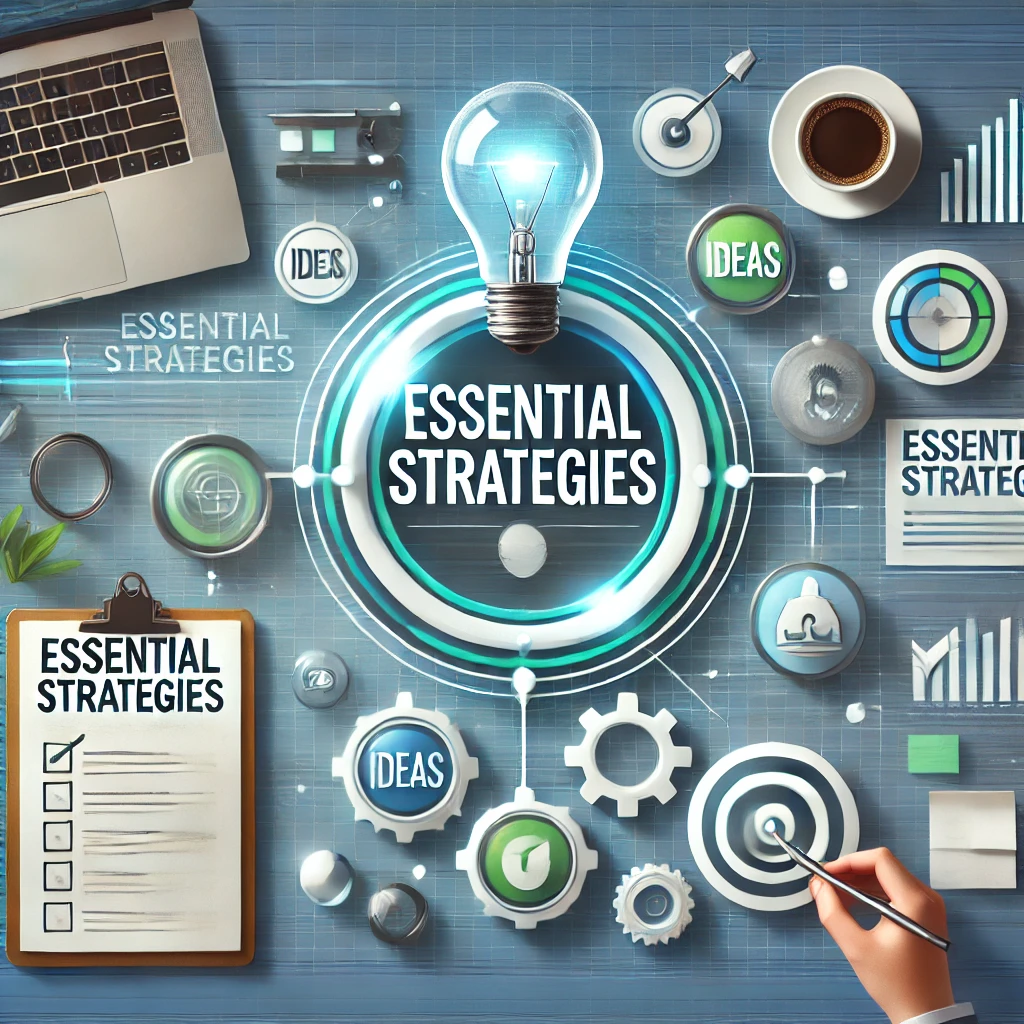Introduction
At 1Up Media, we understand that content creation is a time-consuming but mission-critical task for visibility and growth. Our platform is designed to simplify the creation of high-quality content at scale, making it easier for content creators to manage, streamline, and optimize their workflows. This guide will help you understand how our tools and methodologies can revolutionize your content creation process.
Importance of Efficient Workflows
Efficient workflows ensure that content creators can deliver high-quality content consistently. By optimizing workflows, creators can save time, reduce errors, and improve productivity. Efficient workflows also enable better collaboration among team members, leading to more cohesive and impactful content. With 1Up Media’s platform, you can easily manage multiple projects simultaneously, keeping track of deadlines and ensuring that every piece of content is polished and ready for publication.
Step-by-Step Guides for Content Creation
A well-structured content pipeline includes several key steps, each essential for producing high-quality content. Here is how 1Up Media facilitates each step:
Ideation
- Brainstorming Sessions: Use our integrated tools for brainstorming sessions to generate content ideas. Our platform allows you to capture and organize ideas efficiently.
- Research: Conduct thorough research using our built-in tools to gather relevant information and identify trending topics. Our platform offers insights from tools like Google Trends and BuzzSumo.
Outline Creation
- Structure Your Content: Create an outline within our platform that organizes your content logically. Define main points and sub-points to ensure a coherent flow.
- Set Clear Objectives: Use our strategic planning features to determine the purpose of the content and what you aim to achieve, guiding the writing process to ensure goal-oriented content.
Drafting
- Write the First Draft: Draft your content directly within our platform, focusing on getting ideas down without worrying about perfection. Use a conversational tone to engage your audience.
- Incorporate SEO: Integrate relevant keywords naturally into your content with the help of our AI-powered SEO tools, improving search engine visibility.
Editing
- Review and Revise: Edit your draft for clarity, coherence, and conciseness using our platform’s editing tools. Check for grammatical errors and typos with built-in AI tools.
- Peer Review: Collaborate with team members for reviews directly on the platform, facilitating feedback and catching any mistakes.
Publishing
- Format for Different Platforms: Ensure your content is properly formatted for the platform you are publishing on, whether it’s a blog, social media, or a video channel.
- Schedule Posts: Use our scheduling tools to plan your posts in advance, ensuring a consistent posting schedule.
Promotion
- Leverage Social Media: Promote your content across various social media platforms using our dynamic social media management tools.
- Engage with Your Audience: Respond to comments and engage with your audience to build a community around your content directly through our platform.
Best Practices for Content Management
Effective content management involves organizing content assets, maintaining consistency, and utilizing the right tools. Here are some best practices enabled by 1Up Media:
- Regular Audits: Conduct regular audits of your content to ensure it is up-to-date and relevant. Remove outdated content and update high-performing pieces using our analytics tools.
- Content Calendars: Plan and schedule your content with our integrated content calendar, maintaining a consistent posting schedule and planning around key dates and events.
- Automation: Automate repetitive tasks such as social media posting, email marketing, and content distribution with our automation tools.
- Consistency: Maintain a consistent tone and style across all content to strengthen your brand identity. Use our style guides and templates to ensure uniformity in writing and design.
Tools and Technologies for Content Pipelines
Our platform is equipped with various tools and technologies that enhance content pipelines:
- Content Management Systems (CMS): Manage and publish content easily with our CMS, which offers various plugins and integrations to enhance functionality.
- Project Management Tools: Plan, track, and collaborate on content projects using our project management tools, keeping teams organized and on schedule.
- AI-Powered Tools: Use AI tools like Grammarly for proofreading, BuzzSumo for content ideas, and our proprietary AI for content creation to enhance productivity and quality.
Case Studies and Success Stories
Examining case studies and success stories provides valuable insights into effective content pipeline strategies. Here’s how some of our clients have benefited:
- HubSpot: By utilizing our structured pipeline that includes keyword research, content creation, SEO optimization, and promotion, HubSpot has established authority in the marketing space.
- BuzzFeed: Using our data-driven content creation tools, BuzzFeed produces viral content, incorporating trend analysis, rapid content production, and leveraging social media for distribution.
Expert Opinions and Interviews
We offer valuable perspectives from industry leaders on content pipelines and workflows, helping creators stay ahead of the curve:
- Neil Patel: Emphasizes integrating SEO research at the ideation stage, ensuring content is optimized from the start.
- Ann Handley: Advocates for a customer-centric approach, creating content that addresses audience pain points and interests.
Trends and Innovations in Content Workflows
Staying updated on trends and innovations is essential. Our platform incorporates:
- AI Transformations: Automating repetitive tasks, enhancing personalization, and generating insights with tools like GPT-3.
- Interactive Content: Creating engaging content such as quizzes, polls, and infographics, boosting engagement and retention.
Common Challenges and Solutions
Our platform addresses common challenges in content creation:
- Maintaining Consistency: Use style guides to ensure uniformity.
- Managing Resources: Plan and track progress with our project management tools.
- Meeting Deadlines: Develop a content calendar and use automation tools to stay on schedule.
Strategies for Maximizing Content ROI
Maximize ROI with our strategic planning and execution tools:
- Performance Metrics: Track engagement, conversion rates, and reach to refine your strategy.
- Process Optimization: Continuously evaluate and optimize your content creation process.
- Business Alignment: Ensure content aligns with business goals, supporting marketing objectives and resonating with your audience.
Role of AI in Content Generation
Leverage AI to enhance efficiency and effectiveness in content creation:
- Automation: Automate keyword research, content generation, and proofreading.
- Personalization: Create personalized content that resonates with individual preferences.
- Insights: Use AI-powered analytics for data-driven decision making.
Future of Content Pipelines
Our platform is built for continuous innovation and adaptability:
- Emerging Technologies: Stay ahead with AI, machine learning, and blockchain.
- Evolving Consumer Behaviors: Adapt strategies to meet changing audience needs.
- Market Dynamics: Experiment with new formats and channels to stay responsive.
Metrics and Analytics for Content Performance
Measure performance with our comprehensive analytics tools:
- Engagement: Track likes, shares, comments, and time spent on page.
- Conversion Rates: Measure leads, sales, and other conversion metrics.
- Reach: Monitor visibility across various platforms.
Integrating Content Pipelines with Marketing Goals
Align content with marketing goals using our strategic tools:
- Strategic Planning: Develop content strategies aligned with marketing goals.
- Cross-Functional Collaboration: Foster collaboration between content and marketing teams.
- Continuous Alignment: Regularly review and adjust strategies to ensure alignment.
Personalization in Content Workflows
Enhance engagement with personalized content workflows:
- Audience Segmentation: Create targeted content for different audience segments.
- Dynamic Content: Personalize content in real-time based on user interactions.
- Personalized Recommendations: Guide users through personalized content recommendations.
Collaboration and Team Management
Enhance team efficiency and content quality with our collaboration tools:
- Collaboration Tools: Facilitate communication with Slack, Microsoft Teams, and Trello.
- Clear Communication: Establish protocols for clear communication.
- Role Definition: Define roles and responsibilities to avoid confusion.
Legal and Ethical Considerations in Content Creation
Ensure compliance with legal standards and ethical practices:
- Copyright: Obtain permission for using copyrighted material and give proper attribution.
- Fair Use: Apply fair use principles appropriately.
- Data Privacy: Handle user data responsibly and comply with regulations like GDPR and CCPA.
Enhancing Creativity in Structured Workflows
Balance creativity and structure with our strategies:
- Creative Environment: Foster an environment that inspires creativity.
- Experimentation: Encourage innovative ideas and approaches.
- Flexibility: Allow flexibility within workflows to accommodate creativity.
Sustainability and Scalability of Content Pipelines
Support long-term success with sustainable and scalable pipelines:
- Resource Allocation: Allocate resources effectively to handle increasing demands.
- Leveraging Technology: Automate processes for scalability.
- Continuous Refinement: Regularly review and refine content processes.
Continuous Improvement in Content Processes
Adopt a mindset of continuous improvement:
- Regular Evaluation: Conduct evaluations to identify areas for improvement.
- Implementing Changes: Act on insights gained from evaluations.
- Staying Updated: Keep up with industry trends and advancements.
Conclusion
1Up Media’s platform can transform your content creation process by providing the tools and strategies needed to streamline workflows, enhance quality, and maximize efficiency. By embracing these best practices, you can stay competitive and responsive in the ever-evolving digital landscape. Start optimizing your content pipelines today with 1Up Media and see the difference it makes in your content strategy.
Related Posts:
Comprehensive Guide to Content Pipelines and Workflows (98.87% match)
Mastering Content Pipelines and Workflows: A Comprehensive Guide (97.86% match)
Efficient Content Pipelines for Creators (97.29% match)









